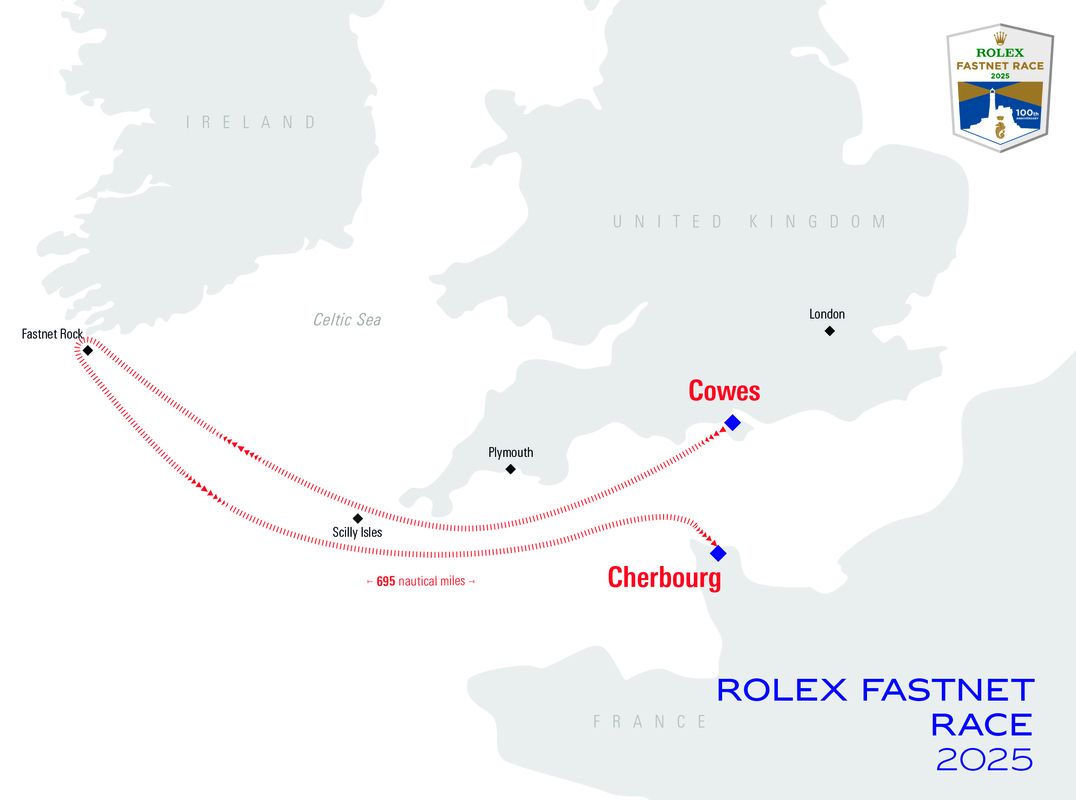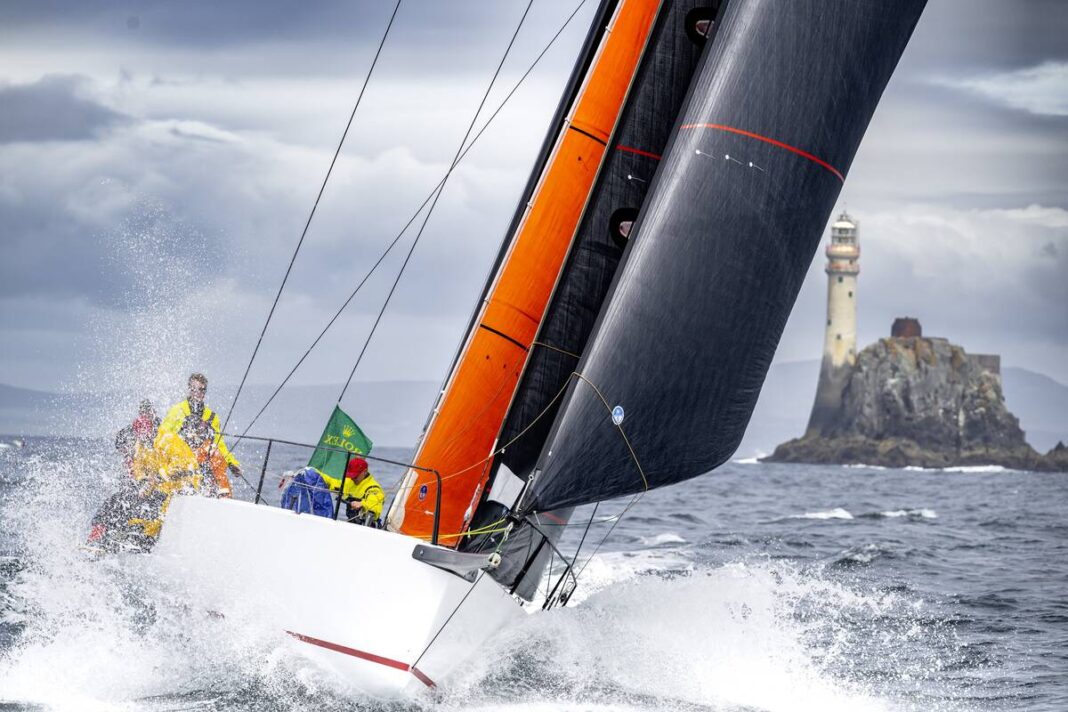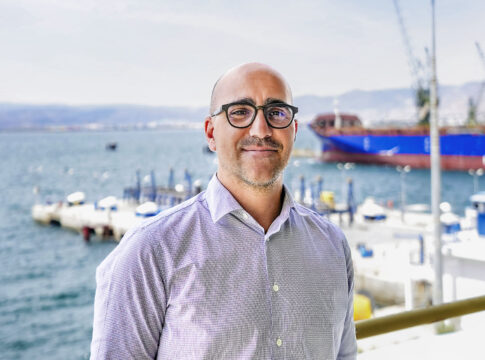For 100 years, the Rolex Fastnet Race has stood as one of offshore sailing’s most complete proving grounds. The 51st edition, marking the centenary of the race’s founding in 1925, more than lived up to that reputation. The story of 2025 adds to the legend. Experiences from the race course demonstrate time and again that this is more than a just a yacht race. It is a true test of human endeavour, an irresistible challenge. Organized by the Royal Ocean Racing Club, the Rolex Fastnet Race has been supported by Rolex since 2001, and is a pillar of its privileged relationship with yachting, which began almost 70 years ago.
Rolex Fastnet Race, 2025
The 695 nautical mile course appears straightforward: sail west to the Fastnet Rock, the iconic halfway point off southern Ireland, before returning east to Cherbourg-en-Cotentin, France. As the record fleet of 444 entries set off from Cowes, England on 26 July, the forecast winds were a far cry from those that ravaged the previous two editions. A less physical race was in store. By the close it was clear this year’s race had still been tough, a more mental examination, testing tactics, strategy and tenacity. Threading a path between the complexities of pressure and tides required constant focus, attention to immediate conditions and accurate assessment of what might lie ahead. The three yachts that emphatically nailed the process were Léon from France, which won the Fastnet Challenge Cup for overall victory under IRC time correction, French trimaran SVR Lazartigue, the first to finish the race, and Black Jack 100 of Monaco, which secured monohull line honours.
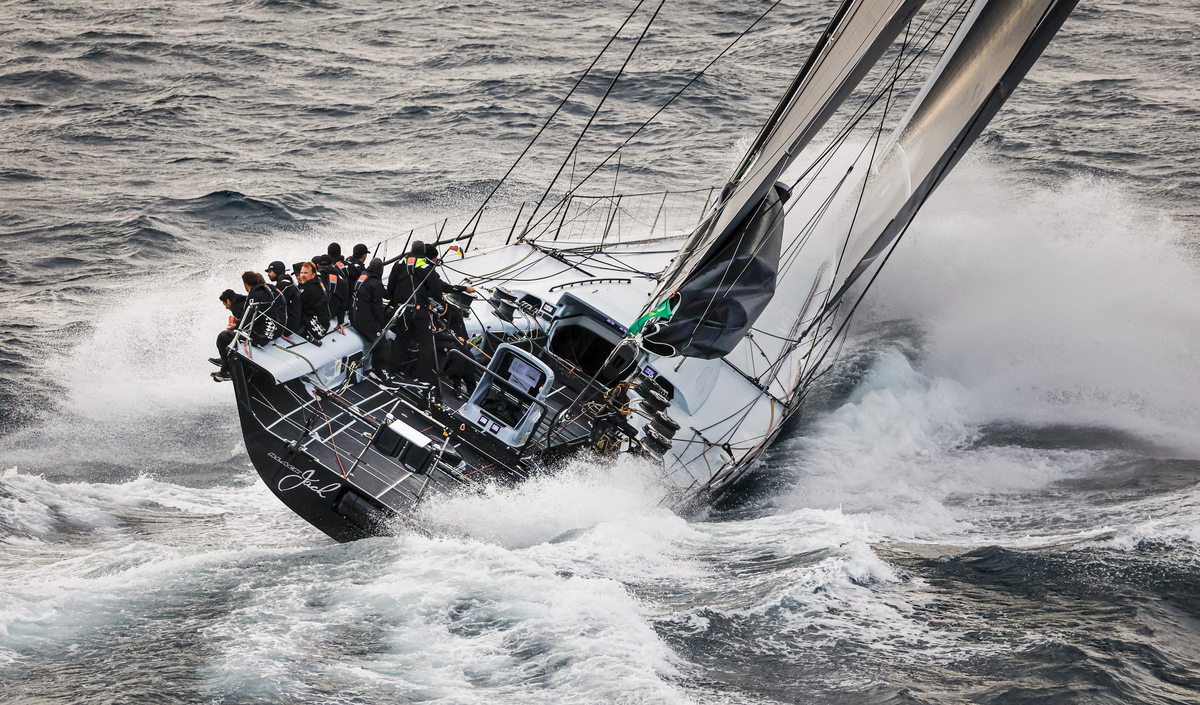
Overall Winner
Racing in the main monohull category comprising 380 entrants, at 10.43 metres (34 foot) Léon may have appeared one of many minnows. The diverse entry list competing for the principal prize ranged in size from 9m (30ft) up to the 30.5m (100ft) Maxis, with innovative designs as well as classics from the 1960s, such as Stormvogel, a line honours winner on her debut in 1961. Léon is, in fact, a wolf and without disguise. The latest model built by JPK Composites in Brittany and designed by Jacques Valer, Léon is a compact racer optimized for short-handed crews. With offshore features such as a rounded (scow) bow, planing hull, light displacement and impressive sail area, in the right hands she is a weapon.

LEON, Sail n: FRA53524, Design: JPK 10.50, Skipper: Alexis Loison
Alexis Loison and Jean-Pierre Kelbert are undoubtedly the right hands. Kelbert is the founder of the builder, and knows all the intricacies of Léon. Most significantly, Loison has previously won the Rolex Fastnet Race, in 2013 with his father Pascal. The Loisons were the first ever double-handed crew to win the race overall. Among other accolades, including winning the two-handed category on six occasions since his debut in 2005, once with Kelbert in 2019, Loison’s credentials extend to being part of the victorious crew at the 2018 Rolex Middle Sea Race, also with Kelbert.
Kelbert was understandably thrilled with the victory:
“We had super race. Alexis injected an intensity and rhythm that I worked hard to keep up with. We had the real ambition to win our class, which we had done before. We knew we had a good boat, but everything has to align. We did well up the Rock even if it was uncomfortable. The way back was fast in a lot of wind until just before the end, when Alexis negotiated currents superbly. To win overall, I am so satisfied and proud of what we have achieved.”
Loison’s pathway to becoming one of the top exponents of short-handed offshore sailing began early in life, as did his captivation with this legendary contest:
“Ever since I was small, I have known about the Rolex Fastnet Race. I got into sailing because of my father. When I was growing up, he talked about the race all the time. It became the absolute Grail.”
Crossing the finish was an emotional homecoming. Loison is from Cherbourg, and friends and family were waiting. It also marked a significant milestone on Loison’s journey. A transfer of knowledge which began in childhood was now complete:
“It was special to see my father on the dock. He was my best teacher, especially the waters [around here], where he taught me all about the tide and the wind. When we had light wind at the end, I knew what to do, what the best strategy would be. It was a good moment.”
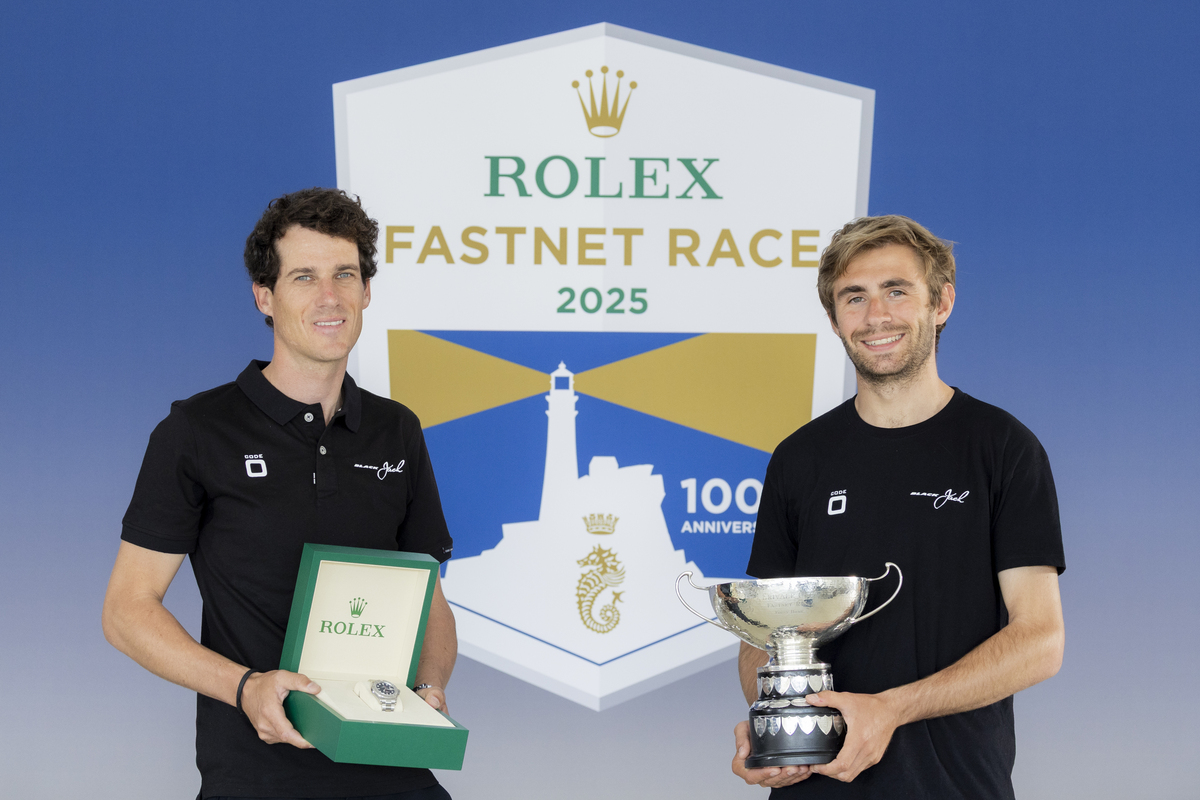
BLACK JACK 100, Sail n: 525100, Design: Reichel/Pugh 30 Custom, Skipper: Tristan Le Brun
The reintroduction of the Admiral’s Cup division to the Rolex Fastnet Race after a near 30-year absence had led to a tantalizing injection of talent. Stars of elite sailing were spread throughout. The contest on the water was remarkable. Opponents were separated by minutes and occasionally seconds. Battles lasted from The Solent to the Fastnet, down to the Scillies and to the Contentin peninsula. Heightened competition was infectious.
Loison described Léon’s own confrontations:
“Intense, no sleep, strategy, strategy and more strategy. We did not have an easy moment. It was always hard finding the right time to sleep, to make good choices and to push. We were very tired at the end.”
“We made a lot of good decisions. One key moment was to go with the big spinnaker just after the rock when the wind was 25 to 27 knots. We were pushing very hard, but by the Scillies could see it had been a good choice. There were a lot of bigger boats around us.”
On Tuesday night, the fourth day, the overall win appeared to have gone the way of the virtually all-pro Jolt 6 representing the Yacht Club de Monaco, finishing 25 seconds on elapsed time behind the equally-talented Callisto of New Zealand and just ahead of Beau Ideal from Hong Kong, another high-quality team. Few were paying attention to a group of two-handed crews making fast progress. It was too much to expect a double-handed entry to beat the mighty array of fully-crewed yachts already ‘in the clubhouse’. Loison was among those to doubt:
“The Rolex Fastnet Race is cream of the offshore races. It is the race that everyone talks about all over the world, and that every sailor comes to. It was great to see the Admiral’s Cup teams taking part, but when I saw the level of the crews, I said ‘that’s it’.’’
Entering port the following day just before noon, Léon topped the leaderboard by an emphatic two hours on corrected time. The enormity of the achievement took time to sink in according to Loison, it was beyond his dreams:
“Coming top of the ranking in the 100th anniversary year of the Rolex Fastnet Race is something really special. We have barely had time to understand what we have done. It is always difficult to imagine winning the race overall before the start because there are so many boats, and all the different weather scenarios really have to come together. Plus, it was already hard to conceive of winning the race just once, and to win again even less so.”
One person who appreciated Loison’s talents had been expecting this moment:
“In 2013, my father kept the Rolex watch [awarded to the overall winner] saying to me I was young, I would win again. And here we are.”
Line Honours
Racing the most powerful yachts on the Rolex Fastnet Race course has a glamorous vibe. Feted by the public, modern-day multihull and monohull Maxis are carbon fibre masterpieces of technology. Few stones are left unturned in the search for the ultimate combination of speed and seaworthiness. ‘To finish first, first you have to finish’ elevates fitness for purpose and reliability in the pursuit of offshore excellence. Breakages can be terminal. Racing these leviathans is stressful and requires calm, clarity of thought.
Four Ultim trimarans took part. The pace may have been slower than previous years, but the competition was no less captivating. SVR Lazartigue, the race record holder from 2023, hit the start line on the gun and at speed. The crew, featuring Rolex SailGP Championship athlete Pete Burling, quickly carved out a slim advantage. First to the rock, they steadily built an unassailable lead arriving in an elapsed time of 41 hours, 18 minutes and four seconds.
A closer battle was delivered by the selection of 30.5 metre (100 foot) monohulls. During the first half of the race, SHK Scallywag from Hong Kong held off the advances of Black Jack and Leopard 3. Once around the Fastnet Rock, the race to Cherbourg became a contest of downwind speed and sail-handling. Black Jack squeezed into the lead, and successfully unpicked the wind and tide conditions to cross the line an elapsed time of two days, 12 hours, 31 minutes and 21 seconds. Beating Scallywag was a reversal of the 2024 Rolex Middle Sea Race, and proof to skipper Tristan Le Brun that this was a milestone in his team’s journey:
“We were extremely disappointed about last year. It took time to recover but it was real motivation. We did a big refit; we trained really hard and were very excited to come to the Rolex Fastnet Race. We knew Scallywag and Leopard would be fast upwind, but we would have a chance if we worked well. Our goal was to stay with them to the Rock. We executed that plan very well. Downwind we were fast, focussed and communication was good.”
Le Brun was clear what it meant to win line honours in the centenary Rolex Fastnet Race:
“It has been a dream my entire life to participate in this type of event, and I am extremely proud of what we have achieved as a team.”
The Rolex Fastnet Race has come a long from the seven yachts that took part 100 years ago. The Royal Ocean Racing Club, itself founded in the immediate aftermath, may be proud of the reputation and standing its flagship contest has achieved. Rolex, too, is proud to be associated a race which, one century on, continues to epitomize both human endeavour and achievement.
